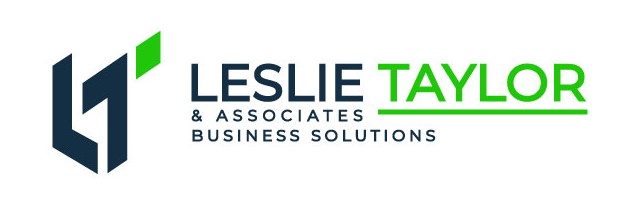Entrepreneurs love the P&L statement. Why? Because it’s focused on profitability. Scrolling down to find what is on the bottom line is like opening a present on Christmas. However, the bottom line is not the only good thing to be found on a P&L. There are so many other gems to be found within this financial statement, lessons that will help you boss better (and more profitably).
First, let’s get the terms out of the way so we’re all on the same page.
Income Statement = P&L statement = Profit and Loss Statement
These are all different names for the same thing.
From here on out, I will use the term P&L to keep things simple and brief.
While most business owners love the P&L statement many never fully utilize all its goodness. Today, I will share with you 7 lessons from your P&L that will help you boss better (there are more, but I will touch on the top ones).
Here we go!
Many small business owners really don’t know how to read their P&L statements. If you fall into this category, you are not alone, so keep reading as I break it down. If you want to stay in control of your business’s finances, regularly reading your statements is critical.
Breakdown of a P&L Statement
You’ll notice when you look at your P&L statement, it’s broken down by line. Sometimes there can be many lines and this is where most people’s eyes glaze over as they begin staring at all the numbers. Here is one simplification strategy I share when I teach about P&L statements.
An income statement is a simple equation made up of 3 components:
- Revenues – total income that comes from the sale of goods and services
- Expenses – Money spent for a physical item or a service needed to operate the business
- Net Income – money that’s left over after paying all expenses
If you remember nothing else, remember that ALL the lines of an income statement fall into one of those three categories.
As for the equation, commit this to memory: Revenues – Expenses = Net Income.
You can take a sigh of relief, the equations are over!
Now that we have discussed the basics, here are the 7 lessons you can learn from a P&L statement. Ask for them from your bookkeeper, accountant, or Profitability Strategist.
Lesson 1: Where is the money coming from?
A P&L statement if set up correctly can reveal the profitability of your business’s revenue streams (services or products) and how profitable they are relative to each other. By understanding revenue streams, business owners can determine which are profitable, which are not profitable, as well as identify potential risks to profitability.
Lesson 2: Where is the money going?
Taking a close look at your business’s expenses at regular intervals can help you track spending more closely and identify dreaded money leaks—money unintentionally leaving your business (areas for cost control, reduction or elimination). This enables you, the owner, to make informed decisions about spending, negotiate better terms with vendors, and explore cost-effective solutions. I can hear the money being saved!!!
Lesson 3: Is that gross or net?
Big revenues are great, but big profits are even better. Margin is what describes how much a business gets to keep after expenses and costs are paid. Said another way, it describes the level of profitability. Your highest cash-generating product or service may not be your most profitable (highest margin) product or service. By watching margins, you will gain insights that will help you position your business to maximize profits. Comparing profit margins over time also helps identify money leaks (see Lesson 2 above), assess competitiveness against peers and identify improvement opportunities, helps with optimizing pricing, and helps you understand how to operate the business better (efficiently, profitably, etc.).
Lesson 4: Is the price right?
Is the price right? A P&L statement can help in answering this question. Assuming business spending has been tightened up, a P&L will answer whether there is enough money available from revenues to cover expenses. While there can be other reasons why revenues don’t cover expenses, this can be an indicator that a price increase is needed. Also, the P&L can be used to show the future effect of price increases —one model that I like to run from many of my clients is if you raise your prices by “X” percent this is what your profit would look like.
Lesson 5: What’s trending?
P&L statements show revenue and expense trends when viewed over a period of months or quarters. Recognizing patterns can help determine (forecast) future performance, enabling you to be proactive in your planning. Tracking expense trends can identify areas of overspending or an upcoming need for funding. Tracking revenue trends can show growth or decline in a business and the need to reduce expenses or staff up to meet future demand.
Lesson 6: Shrinking, Maintaining, or Growing?
Once you have been in business for a while, the trend data from Lesson 5 can help you look back on your progress. This can be done for short and long time frames, but one I love to show clients is how their revenue has grown since the beginning. I show this in a bar graph and it can feel really good to see how far your business has come. However, just as important is being able to track the behavior of revenue, spending, and (net) profit so you know where you are and where you are headed. If there is a set back or decline, by how much was the decline, for instance.
Lesson 7: You vs. Them
A P&L statement allows businesses to benchmark or compare their financial performance against others in their industry. This comparison offers insights into your company’s relative performance, highlighting areas of strength and weakness. By benchmarking margins and operating costs, businesses can set realistic goals, identify improvement areas, and adopt best practices.
As you can see, the P&L statement provides crucial insights beyond just the single number on the bottom line. Extracting lessons from it empowers business owners and leaders to understand financial health, identify improvement areas, and make profitable decisions. Utilizing these seven lessons will promote growth, profitability, and long-term success for your business.
We Can Help
As business solutions experts, we have helped dozens of businesses untangle complex issues and clarify a path to greater profitability.
At LTA, we don’t do taxes. We do EVERYTHING else!!! We love helping our small business clients manage their numbers into profitability. We take a proactive approach to profitability and a supportive approach to helping you gain the control and clarity required to grow, scale, and realize your vision. Schedule a Discovery Session to learn more.

